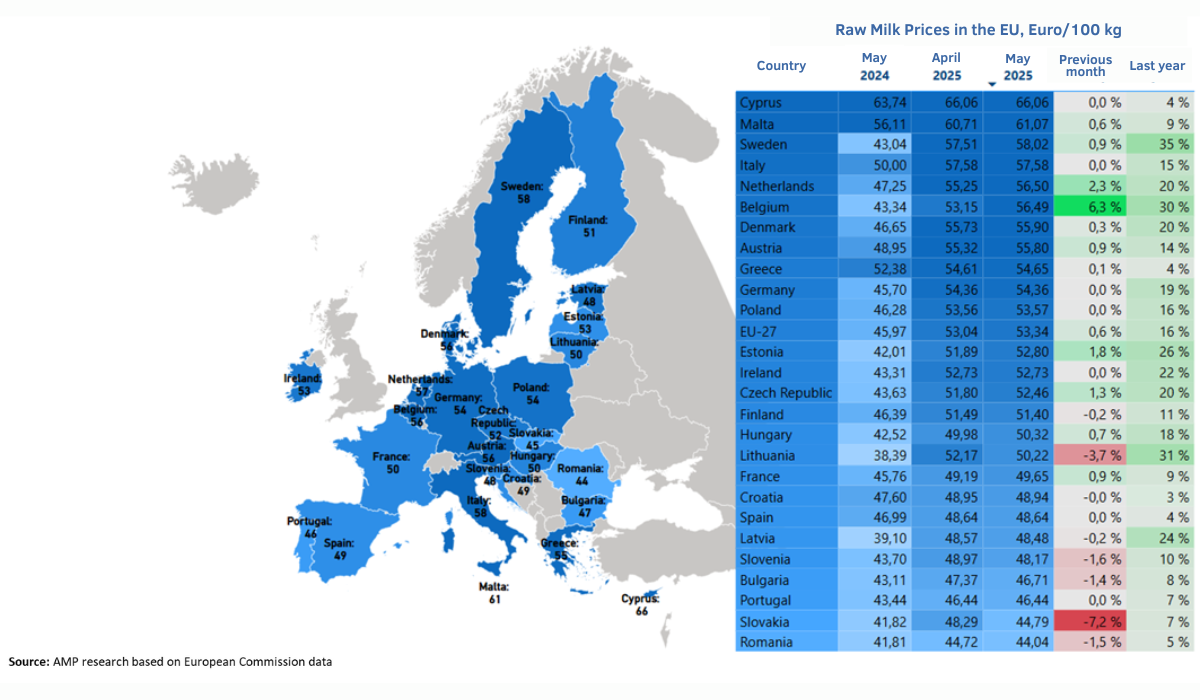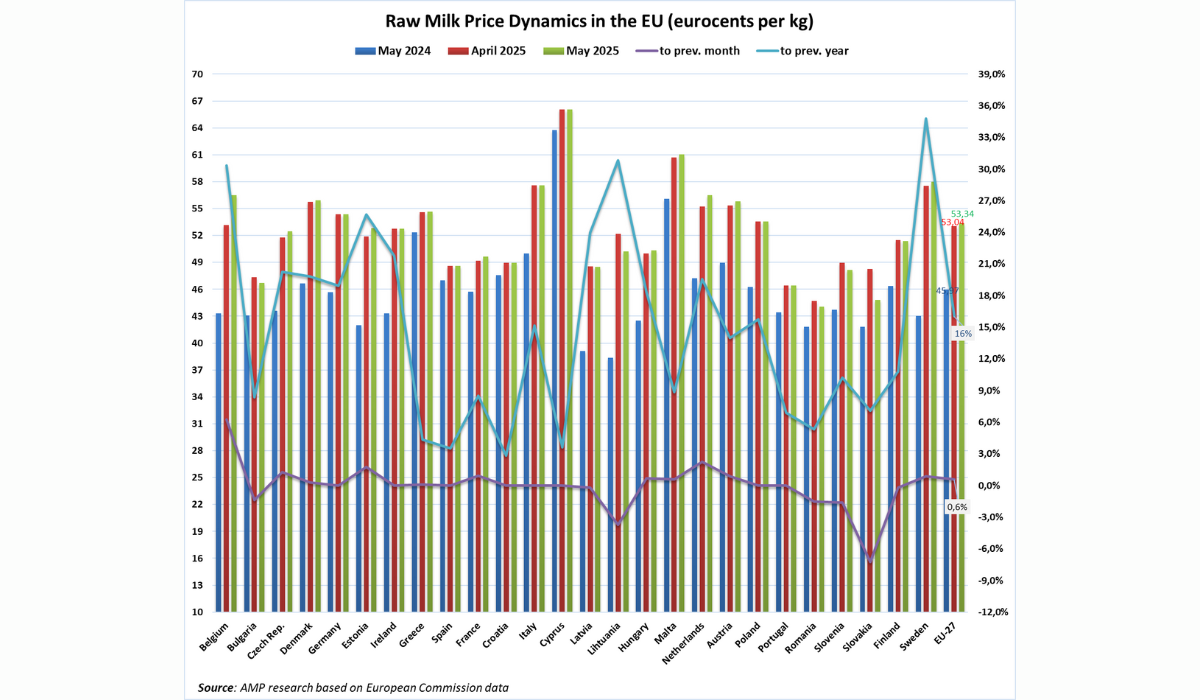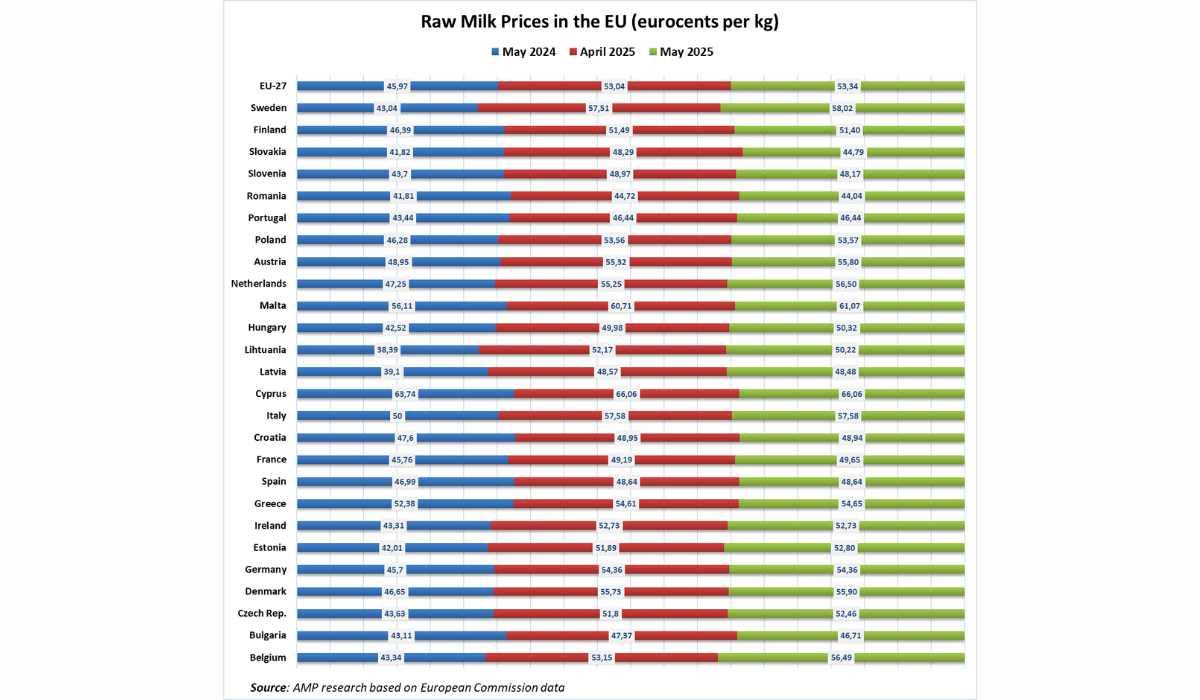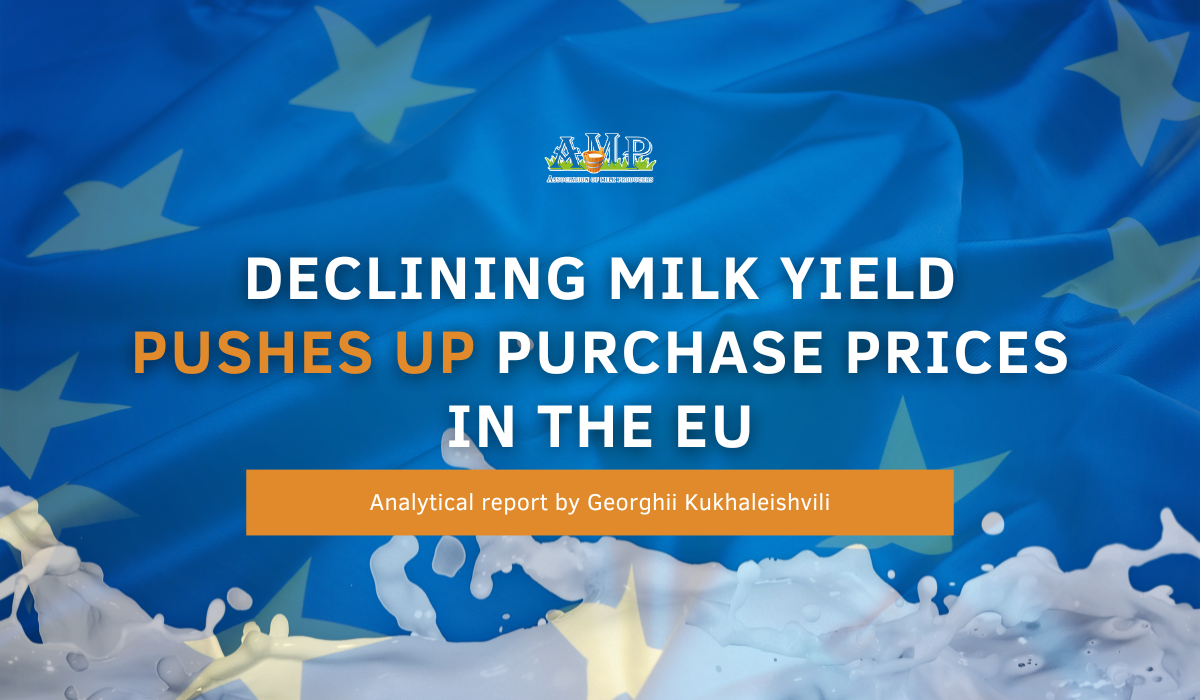A reduction in milk yield volumes in the EU is leading to rising raw milk purchase prices, reports Georghii Kukhaleishvili, an analyst at the Association of Milk Producers (AMP).
According to preliminary data from the European Commission, in May 2025, the average price for raw milk in the EU was 53.34 eurocents per kg, which is 0.6% more than in April 2025. Compared to May 2024 prices, milk in the EU became 16% more expensive. In May, the price for extra-grade milk in Ukraine was 38.90 eurocents per kg.

Compared to April, the price for raw milk increased in 11 EU member states. Among large producers and exporters of dairy products, raw material prices increased in France to 49.65 eurocents per kg (+0.9%), in the Netherlands to 56.50 eurocents per kg (+2.3%), and in Denmark to 55.90 eurocents per kg (+0.3%) relative to April 2025. Milk prices increased most significantly in Belgium, reaching 56.49 eurocents per kg (+6.3%).
In May, purchase prices remained unchanged in Germany, Ireland, Spain, Italy, Portugal, Croatia, Poland, and Cyprus compared to April of the current year.
Over the last month, raw milk became cheaper in 7 countries. The largest price reductions were observed in Slovakia to 44.79 eurocents per kg (-7.2%) and Lithuania to 50.22 eurocents per kg (-3.7%).
The most expensive raw milk was in Cyprus (66.06 eurocents per kg) and Malta (61.07 eurocents per kg). The lowest prices for milk were received by farmers in Romania (44.04 eurocents per kg) and Slovakia (44.79 eurocents per kg).
Compared to May 2024, raw milk prices increased in all European countries. Relative to the same period last year, milk prices increased most significantly in Sweden (+35%) and Lithuania (+30.8%).
Georghii Kukhaleishvili suggests that the reduction in milk yield volumes in the EU is pushing up raw milk prices. According to USDA data, milk production in Europe is declining week by week. In 2025, raw milk production volumes in many European countries are lower than last year. The European Commission reported a drought between April 21 and 30. According to the Combined Drought Indicator (CDI), most regions of Europe recorded "watch" and "warning" levels, while parts of the Mediterranean, Middle East, and North Africa registered "alert" levels.

According to a study published in the Journal of Dairy Science, heat stress affects the reduced fertility rate of Holstein cattle in the Netherlands and genetic variability. Currently, most European countries are at their peak milk production, but there is a shortage of replacement heifers due to last year's bluetongue outbreak and its long-term consequences: lameness, weight loss, and reproductive issues (infertility and miscarriages). Cream prices have risen due to the impact of increasing air temperatures across Europe on the fat content of raw milk. As reported by The Bullvine, amidst reduced milk yield in Europe, consumers from Asian countries are switching to purchasing American butter.

Press Service of the Association of Milk Producers
Follow us on Facebook
Related News


